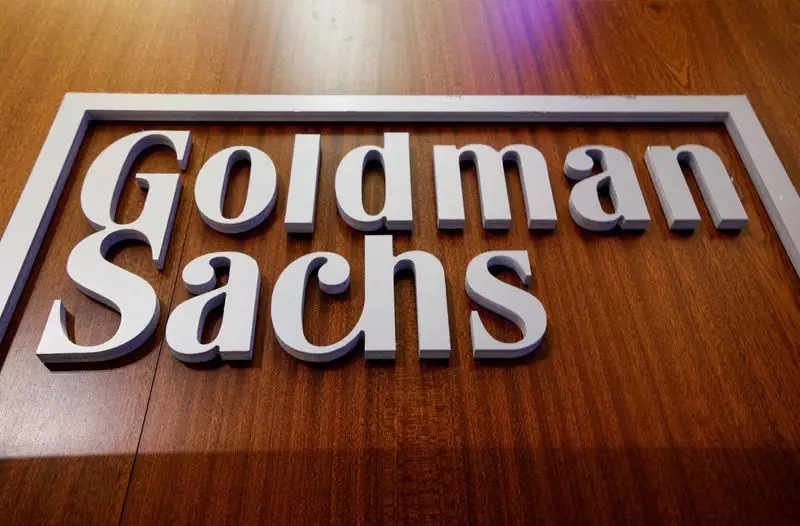In a remarkable display of financial prowess, Goldman Sachs has announced its most significant profit since the third quarter of 2021, surpassing Wall Street’s expectations by a wide margin. The investment bank’s fourth-quarter earnings hit an impressive $11.95 per share, shattering the anticipated figure of $8.22 as compiled by analysts at LSEG. A combination of robust deal-making, debt sales, and trading strength has fueled this financial success, prompting a 2.6% rise in the bank’s shares shortly before the market opened.
The optimism surrounding the banking sector is palpable, with executives expressing confidence in a resurgence of deal-making activities in 2025. Factors contributing to this buoyancy include expected interest rate cuts by the U.S. Federal Reserve and the pro-business rhetoric from President-elect Donald Trump. David Solomon, the CEO of Goldman Sachs, expressed satisfaction with the results, noting that they successfully met or exceeded nearly all strategic targets set five years prior.
Goldman Sachs’ investment banking segment has shown a remarkable uptick, with fees increasing by 24% to $2.05 billion during the fourth quarter. This growth is largely attributed to a significant increase in debt underwriting activities, which thrived on the back of strong leveraged finance and corporate bond sales. Furthermore, a broader industry recovery in mergers and acquisitions, as well as a rebounding equity and debt market in the second half of 2024, has enhanced the performance of Wall Street’s leading banks.
Analysts such as Chris Kotowski from Oppenheimer & Co. have noted their bullish stance on Goldman Sachs stock, arguing that the market has not yet fully appreciated the upside potential associated with an impending robust M&A cycle. Within the investment banking landscape, revenues from both equity and debt underwriting surged significantly—98% and 51%, respectively—buoyed by increases in secondary offerings, initial public offerings, and a variety of private placements.
Despite the positive performance in many areas of investment banking, Goldman’s advisory revenue fell by 4% for the fourth quarter. However, the outlook for 2024 remains optimistic due to an increase in completed deals, particularly with total investment-banking revenue worldwide increasing by 26% to a staggering $86.8 billion.
In addition to its investment banking success, Goldman Sachs’ asset and wealth management division also thrived, reporting an 8% increase in revenue to $4.72 billion. The global banking and markets division fared even better, with revenues climbing 33% to reach $8.48 billion during the quarter. This success can largely be attributed to the favorable equity market conditions, with equity traders experiencing a 32% increase in revenue, reaching $3.45 billion, bolstered by a historic rally in the stock market.
The positive market sentiment has been linked to anticipated economic policies from the newly elected administration and a reduction in interest rates, resulting in record highs for U.S. stocks. Moreover, fixed income, currency, and commodities trading saw revenues soar by 35%, reflecting the heightened activity levels in those markets.
In light of its promising financial performance and market position, Goldman Sachs has undergone a series of strategic transformations. The firm is implementing leadership changes and creating a new division aimed at financing substantial deals and providing loans, tailored to capitalize on lucrative opportunities within the private credit sector. Notably, the bank is also working to streamline its consumer operations, which have historically been problematic, incurring significant losses.
Solomon, who previously advocated for an expansive retail strategy, faces scrutiny amid these adjustments. Notably, the bank’s provisions for credit losses decreased to $351 million in the fourth quarter, down from $577 million a year prior, suggesting improved management of its credit card portfolio.
Goldman Sachs ended the year 2024 on a high note, with its stock surging 48.4%, marking the most substantial increase among the six largest U.S. lenders. The bank’s profit surged to an impressive $40.54 per share compared to $22.87 in the previous year, with total revenue climbing 16% to $53.51 billion. As of the end of 2024, Goldman employed 46,500 people, reflecting a 3% growth in its workforce.
The combination of strategic leadership, keen market insight, and robust performance across various financial segments positions Goldman Sachs well for continued success as it navigates the evolving financial landscape. With upcoming opportunities and market potential in sight, investors and stakeholders alike have cause for optimism regarding Goldman Sachs’ trajectory in the coming years.

